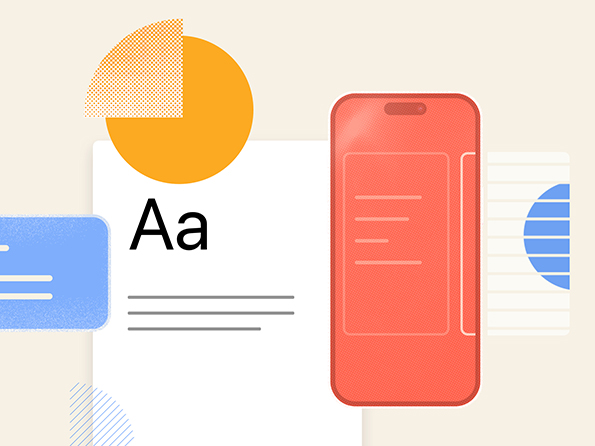Is Google Dinging Your Site for Bad UX Design?
Depending on the last time you redesigned your website, I’ve got some either very welcome or very unwelcome news for you: Google now factors good user experience design (UX) into its search rankings. Beginning in May of this year, those good UX signals are going to become of larger importance to the search algorithm.
It gets better/worse: Google is also tinkering with the idea of placing labels on search results that indicate whether a site conforms to its good UX criteria or not.
Curious about how this affects your site and what you can do about it? Here’s the skinny.
The official company line
In November 2020, Google announced that “the page experience signals in ranking will roll out in May 2021. The new page experience signals combine Core Web Vitals with our existing search signals including mobile-friendliness, safe-browsing, HTTPS-security, and intrusive interstitial guidelines.”
Let’s unpack that.
Core Web Vitals
Core Web Vitals is a three-pack of good UX criteria grading for how quickly and how well a website loads.
- “Largest Contentful Paint” is a measure of how quickly a page’s content comes into view. In other words, Google wants you to get straight to the point without a lot of delay or razzle dazzle.
- Next, Google looks at “First Input Delay,” which grades a page on how quickly the user can interact with the site. An example of this is a page that seems to load fine, but then takes a handful of seconds for links to be actually clickable (Yes, I’m looking at you, Bank of America online banking portal). Google doesn’t like this either.
- The third measurement is “Cumulative Layout Shift,” which gauges a page’s visual stability. Put another way, a page shouldn’t flash unstyled fonts, nor should the page components distractingly shift into place in the first few moments of loading.
The addition of Core Web Vitals is really the big news here with regards to the May algorithm update. The other good UX signals described below are also going “official” in May, but we’ve noticed Google already beginning to reward or punish based on the implementation of some of them. So, read on.
Mobile-friendliness
In the age of the smartphone, it is hardly surprising that Google has shifted its focus to emphasize user experience on mobile devices. According to the Google Search Central, users “now browse the mobile version of a site as often (or more often) with a mobile device, rather than browsing with a desktop computer.” StatCounter cites the breakdown at 48.56% desktop vs 47.46% mobile in the U.S. and 55.73% mobile vs. 41.46% desktop worldwide. Is your site’s mobile compatibility a sad afterthought? You might just be alienating most of your users.
Safe-browsing
If you’re a Chrome user, then you’ve no doubt come across the “red screen of death” that warns you to turn around and head back the way you came. This is the Google Safe Browsing service, which steers users clear of phishing scams or sites that have been hacked. If Google is proactively preventing users from visiting your site, might that hamper your search ranking? You betcha. Make sure your website partner or web host has put measures in place to keep your site clean.
HTTPS-security
This refers to the little lock you see in your browser bar when the connection to a site has been secured with an SSL certificate (Secure Sockets Layer), which encrypts the data being passed back and forth between the site and the user. For the first couple of decades the Web was in existence, this was only necessary for sites handling credit card transactions. Then a couple of years ago, Google’s Chrome browser started showing a “Not secure” warning on ANY site without an SSL certificate. Firefox soon followed suit. Now, Google is adding this as ranking criteria in its search algorithm. So, practice safe sites.
Intrusive interstitial guidelines
An interstitial is a promotional overlay that obscures the content of the page. You probably see 100 of these a day and click the “X” button on all 100. And why do you do that? Because you came to the page in question for a specific piece of content, not the ad that the site owner is shoving in your face. Google also wants its users to land on the content they searched for rather than an intrusive ad, and so it’s going to begin dinging sites with interstitials in its search results (though legal interstitials, like GDPR cookie warnings, are OK no matter how big they are). If your site throws up an email capture box in exchange for your latest and greatest white paper, just be sure to make it subtle.
What the above boils down to is that Google is rewarding sites that connect users to what they’re looking for as quickly and safely as possible. Get on board, or get ignored.

About north street
We engineer the thoughtful transformation of great organizations. Our proven process helps us understand what your competitors are doing right — and wrong. Want to learn more? Let’s chat.



























